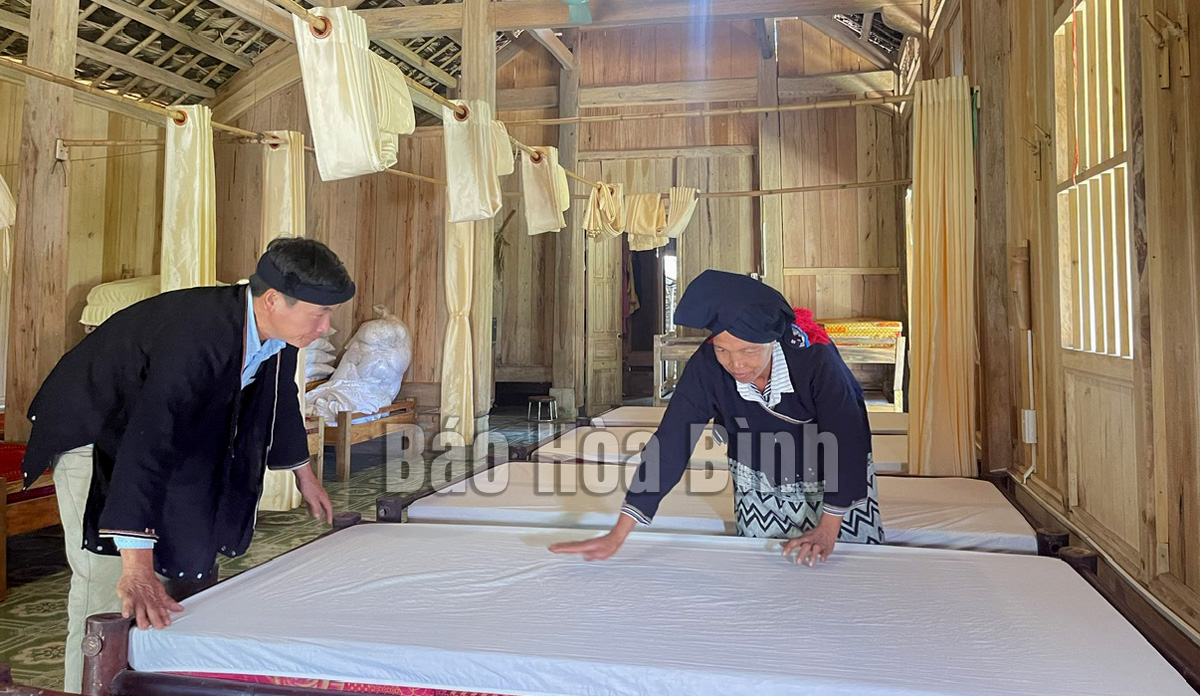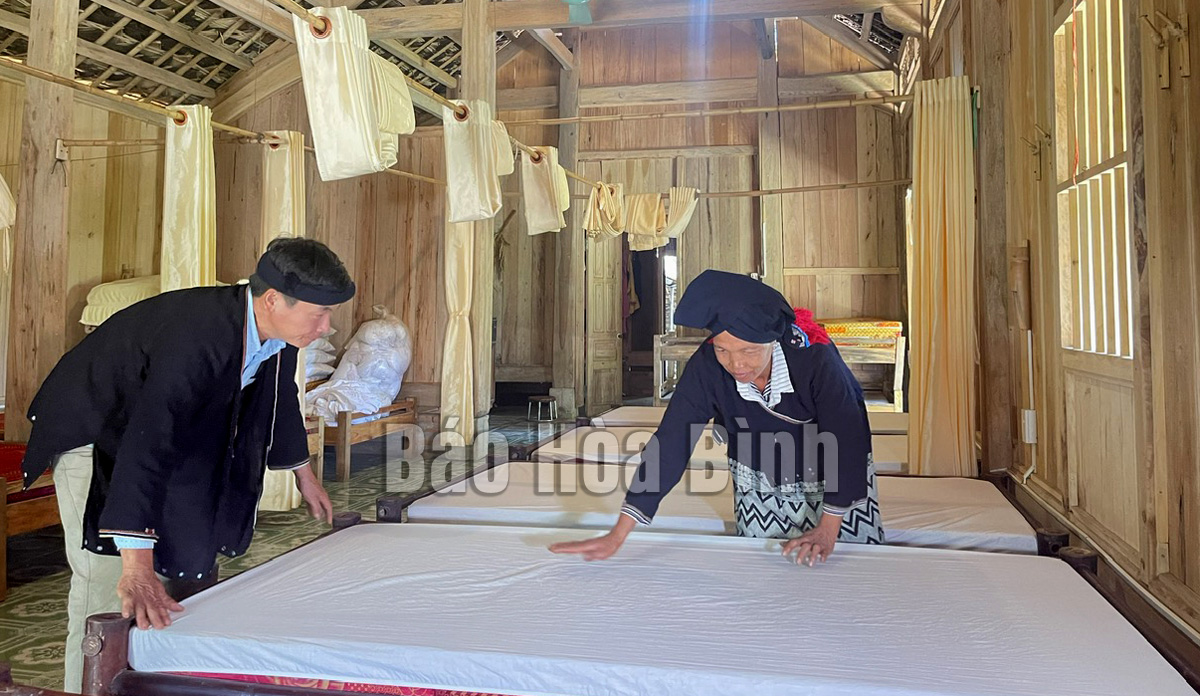



With the model of community tourism, Dao people in Sung hamlet, Cao Son commune (Da Bac) have a more stable life.
It was ever unknown what a homestay was
It takes nearly 20 minutes to drive from the center of Cao Son commune to Sung hamlet. The first impression is the wild beauty with fresh air. Together with the communal officials, we visited the family of Mr. Ly Van Thu, the secretary of the hamlet branch, who was also the first person in the village to provide homestay services. The homestay of Mr. Thu's family has a relatively large 3-room ground floor house, a concentrated living area, there is a large garden with a variety of green vegetables in front. Mr. Thu says that, a family's homestay can welcome about 15-20 guests, serving meals and sleeping on the spot on average.
Looking at the neatly arranged and clean homestay, few people know that, 7 years ago, when AOP Vietnam brought a program to support livelihoods in the ethnic minority areas to Sung hamlet proposing a project developing community tourism, Mr. Thu and most of the people there did not know anything about community tourism as well as homestay accommodation. Mr. Thu says it is about 12 km from the center of Cao Son commune, Sung is a particularly difficult hamlet of the district. The people's lives are mainly farming and afforestation. As a result, what is a homestay, I and all the people here do not know.
However, after learning from experience, seeing with the own eyes the homestay model of Mong and Thai ethnic minorities, Mr. Thu understood that this was an opportunity for the people of the Sung village. Therefore, he actively propagated and mobilized the people to participate in the project. "Being used to the peaceful life of farming, the people were still afraid of doing homestay. As the village head, the party member, I decided to go and experiment first so that the people could directly see, learn and follow” – Mr. Thu says. So, Mr. Thu received 30 million VND for support, 40 million VND for a low-interest loan from the project to invest in upgrading his house to become a tourism destination. "30 million VND can be used to invest in a clean toilet area, 40 million VND is not enough to upgrade the house, buy equipment, so we also has to borrow more. The total investment is nearly 400 million VND” - Mr. Thu says.
Not seeing the profit, "the borrowed public debt” went away. However, Mr. Ly Van Thu was determined not to be discouraged. As after studying and learning about community tourism, he knew that in Sung hamlet there were many favorable factors for tourism development. Especially, in 2018, when Cao Son - Tien Phong inter-commune road through the hamlet was invested and built, it created great advantages for the development of community tourism. In 2018 - 2019, on average, Mr. Thu's family welcomed about 500-600 turns of visitors each year, earning about 150-180 million VND from tourism. From the only homestay model, Sung hamlet has had 2 more households doing community tourism and 54 households participating in service groups providing tourism products so far. Developing community tourism has contributed to changing the face of Sung hamlet, and the people's lives have been improved, the per capita income of the whole village has reached more than 34 million VND a year.
To the strategy of making tourism in a sustainable way
To turn Sung hamlet from an isolated village into a village of community tourism, it can be said to originate from the project of AOP Vietnam. However, to create more highlights that make the hamlet become a familiar address in the community of the people who love exploring, it is thanks to the people's own innovative thinking about a sustainable tourism strategy, taking the natural landscape and the national culture as the foundation. That mindset is present in all aspects of the people's lives, making Sung hamlet form the attractive tourism products, combining the majestic wild beauty with the unique indigenous culture. Coming to Sung hamlet, visitors can experience walking to learn about the ancient trees of hundreds of years old, which are considered as treasures of the village; exploring the ancient Shan Tuyet tea forest at the foot of Bieu mountain and enjoying the rich tea flavor of the indigenous people; joining the class of ancient Dao letters, Cap Sac festivals to better understand the responsibility of a Dao man and experiencing the profession of dyeing and embroidering brocade to see the ingenuity and sophistication of Dao woman.
Currently in Sung hamlet, people have established many service groups to provide tourism products, including the tour guide group, the art group, the culinary group, the foot bath group, the herbal bath group, the brocade waving group and the group of Dao letters. Ms. Ly Thi Nhat, a member of the brocade waving group says: When setting up the service groups, we are trained and learned to improve our skills. The members of the groups are able to communicate with foreign guests. The experiential activities have been better organized. As before, to experience the brocade craft, we brought visitors to the small households. Now we have built a showroom, combining experience and launching many new products such as handbags, wristbands, keychains... to serve visitors.
As Ms. Nhat says, the tourism products in Sung hamlet are increasingly rich, however, that is not the final destination of Dao people in Sung hamlet. The village sets a target to achieve ASEAN standards for community tourism by 2025. More than ever, the households of Sung village are gradually making efforts to adapt and become an attractive destination.